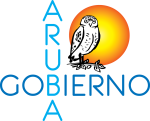Department of Telecommunications
The objective of the Department of Telecommunications is:
- Prepare, implement and supervise compliance with laws and the underlying rules relating to telecommunications;
- Prepare and implement and oversee effective frequency spectrum management and monitoring the use of ether;
- Prepare and implement general government policy in the field of telecommunications (general policy, permits, rates, number issue);
- Coordinate and advise on international telecommunication matters and with international telecommunications organizations;
Examples of communication infrastructures in which DTZ is involved in any way:
- Paging networks (radio transmission device); This is a network that enables voice and alphanumeric messages via one direction. Messages are sent via telephone network to a "paging terminal", which converts the messages into a format which is subsequently transmitted wirelessly via a transmitting device to a small customer terminal (receiving device).
- Internet Cafés via the SETAR infrastructure. Internet Cafés are locations where customers can access the Internet via available terminals. To make it attractive for customers, the environment is often set up as a café.
- Closed data networks for own business operations. Companies that want to set up an internal often wireless data connection between their buildings can do this.
- This only concerns connection for own business operations and may not take place through a third company. A connection to the public telephone network may only be made via SETAR.
- Internet Telephony with accompanying Calling Cards. The current voice connections are usually circuit switched. The rise of the Internet means that voice connections based on the Internet protocol have also become possible.
